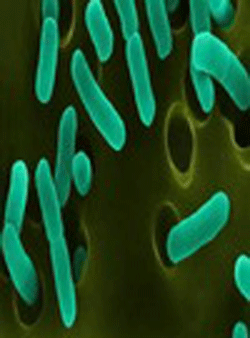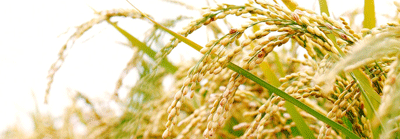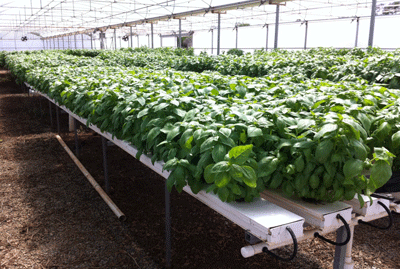By Jerome Matthews
Helping support long held claims for the efficacy of BiOWiSH™ are a series of wide ranging international case studies and a growing political urgency that recognises that the earth is not an infinite resource for food and an endless supply of potable water.
After 18 years of research and development, claims about the worth of the three forms of organic and bio-degradable BiOWiSH are no longer greeted with scepticism. Makers of the US based product say its anti-bacterial, anti-fungal and toxin neutralisation properties set it apart from conventional enzyme technologies.
BiOWiSH accelerates enzymatic bio-chemical reactions, due to the production of small molecule metabolite co-factors that, in combination with a broad spectrum of enzymes, accelerate the breakdown of all non-living organic matter into its final inert compounds. BiOWiSH has also been proven to beneficially accelerate metabolic enzyme reactions.
It has been tested safe for everyday use in a diverse range of product applications ranging from industrial emissions, cropping, animal agriculture, aquaculture, as well as human and animal health, to wastewater, solid waste and soil and water remediation.
The speed of the efficacy of BiOWiSH is due to the production of small molecule metabolite co-factors, that in combination with a broad spectrum of enzymes, have been proven to accelerate the breakdown of all non-living organic matter into its final inert compounds. Makers say it has also been proven to beneficially accelerate metabolic enzyme reactions.
The biotechnology consists of three beneficial bacteria and two yeasts acting in symbiosis, creating enzymes and working to rapidly digest fats, protein, carbohydrate, cellulose, bad organic odour and waste products.
The powder form of the compound contains active microbial formulations used in environmental management, cleaning and animal health. Food grade product is the result of further fermentation to contain a high level of enzymes, the small molecule metabolite catalysts and other metabolites but no active microbials. It can contain a protective cellulose coating that allows it to be stored in solution with mechanical activation.
For human health and cosmetic applications, further processes sterilise the formulation, retaining only the pure enzymes and metabolites. BiOWiSH is not yet licensed for human consumption in New Zealand or Australia.
Core capabilities include the ability to rapidly degrade the molecular structure of any organic matter into simpler structures through its accelerated catabolic enzymatic activity. It then rapidly digests the full spectrum of organic matter into final inert end products via microbial digestion.
Its anti-bacterial qualities evolve from the production of powerful anti-bacterial agents bacteriocins including the pediocins A and AcH. The bacteriocins produced by BiOWiSH are effective on the full range of gram negative and a wide range of pathogenic gram positive bacterium including vibrio cholerae, salmonella sp, pseudomonas sp., E.coli, clostridium botulinum, clostridium perfringens, staphylococcus aureus, and listeria monocytogenes.
The mode of action is unlikely to build specific resistance, the makers say, and is via membrane destabilisation and autolytic action or cytoplasmic leakage leading to cell lysis.
BiOWiSH produces a peptide compound known as an iturin, which is a powerful anti-fungal agent. Iturins are also known to eliminate fungi that are the cause of aflatoxins.
The product has been tested and proven effective in the control of fusarium, collectotricum, rhizoctonia, aspergillus, and phytopthera. This capability is deployed in cropping, water treatment and human health applications.
This capability to neutralise a wide range of toxins including aflatoxins, mycotoxins, endotoxins and exotoxins is used in animal health, environmental and human health products.
The technology reduces fats and sludge in meat rendering facilities – see JB Swift case study – and has a proven track record of reducing ammonia odours in US chicken sheds, which can result an extra harvest every 12-15 months as it speeds up the time it takes for chicks to grow by four-five days per batch – it also reduces the amount of time fans need to be operating and so reduces power bills (see case study).
In Australia there are examples in Queensland and NSW of the technology in use to eliminate odours from piggery manure dams (see case study) and reduce sludge and odours from dairies and dairy manure ponds (enabling water to be used for irrigation – see case study) and to eradicate odours emanating from molasses storage tanks.
In Queensland it is used in service stations to break down oils and grease and has been used on the remediation of chemical spills and in landfills to break down organic matter, thereby reducing the size of the landfill. It improves the quality of leachate water and can reduce the odour from the site by as much as 90 percent – it can also remove blue/green algae from ponds.
On the cropping side the technology has achieved impressive results from trials on Maize in Nigeria, increasing yields by 101 percent and rice in Vietnam 12 percent + (see case studies).
Of particular relevance to New Zealand is the fruit and vegetable wash which enables longer usage of wash-water, a reduction in the use of expensive chemicals and healthier fruit and vegetables with a longer shelf life. This has been particularly effective in banana production (see case study) but will equally apply to other fruits and vegetables.
Jerome Matthews is chief executive of Microbeix Pty Ltd, Australia based importers of BiOWiSH.
www.biowishtechnologies.com
0061 7 5520 6904, 0061 4 054 87665
Maize and rice
Vietnam is the world’s second largest exporter of rice and farmers are under pressure to keep production levels up and environmental impact down.
The second most important crop in Vietnam is corn, production of which is challenged by poor soil fertility and irregular rainfall.
For the rice crops the objectives were to increase yield components, such as the panicle number per square metre, filled grains perpanicle and 1000 grains weight, as well as paddy yield. For maize the objectives were to increase plant weight and actual yield. The panicle is part of the rice plant that develops into grains, therefore more panicles translates into more rice being grown Eight trials were conducted – two small scale and two large scale trials on rice crops, and two small scale and two large scale trials on maize crops.
For the rice trials, testing was conducted over a two month period in the Mekong Delta region of Southern Vietnam. Both large and small scale trials were conducted at the same site, using the same parameters on a 10,000m2 plot. A seeding density of 120kg seed per hectare was used. The control treatment used standard inorganic fertilisers per ha – 100 N + 70 P2O5 + 35 K2O.
Two different concentrations of BiOWiSH Crop were studied – 750g per ha and 1.1kg per ha, applied on days 10 and 20. The BiOWiSH treatments also incorporated 90 percent of the inorganic fertiliser programme used in control.
The maize trials were also conducted over a two month period in the Cu Chi district. Both large and small scale trials were conducted at the same site, using the same parameters on 5,000m2 plot. A density of 33 plants per square metre was used. The control treatment used standard inorganic fertilisers per ha – 120 N + 60 P2O5 + 40 K2O. The maize trials applied the same BiOWiSH Crop treatment programmes as the rice trials.
For the two small scale trials, BiOWiSH Crop increased the number of panicles/sqm and yields in the areas treated with BiOWiSH Crop were as much as 13.2 percent higher than the untreated areas.
With the maize trials, the use of fertilisers with BiOWiSH Crop increased the maize yield by as much as 4.1 tonnes a hectare over the control crop.
The large scale trials examined the economic benefits of using BiOWiSH Crop. Researchers used a maize price of US$0.125/kg and a labour cost of US$50. The cost of BiOWiSH Crop was partially offset by the savings from reducing the standard inorganic fertiliser programme by 10 percent.
Plants treated with BiOWiSH Crop had higher yields than control plants in both the small and large scale trials.
For the rice trials, the increases were between 12 percent and 13.2 percent on the small scale trials – the large scale rice trials had increased yield of between 0.74 and 0.81 tonnes per hectare, which resulted in increases in net profit of between US$182.45 and $199.25 per hectare per crop.
The small scale maize trials had yield increases ranging from 12.8-15.1 percent. The large scale trials had yield increases ranging from 3.46 to 3.67 tonnes per hectare and increases in net profit of between US$371 and US$394 per hectare per crop.
Wastewater
JBS is a large multinational meat processing company with over 140 production facilities worldwide. Its beef processing plant located in Colorado embarked on a project to improve the operation and efficiency of the plant’s existing wastewater system by reducing solids and biochemical oxygen demand (BOD).
Wastewater flows from a series of anaerobic lagoons to an anoxic section, followed by aeration basins and finally into a large holding pond. Sludge was measured to be 4,515 tonnes, which is removed by truck hauling for land application. The plant had identified potential cost savings opportunities from reduced sludge production that would impact hauling fees and improve their environmental footprint, maintenance and operation. There was also a ‘grease cap’ covering the surface of the lagoon, consisting of a significant amount of insoluble fats, oils and greases. The project was against a separate, identical, control lagoon.
The samples from the two lagoons were aggregated and tested by third party laboratory analysis and the data aggregated.
In less than three months, BiOWiSH Aqua FOG significantly reduced sludge, waste being sent to landfills and pollutant levels. These reductions saved the facility $193,266 in the three month period and dramatically reduced its carbon footprint.
Dry solid were dramatically reduced following an initial period of increased suspended solids, primarily within the grease cap layer. As treatment continued, the new and existing biology acclimated to both the environmental parameters and of the aqueous system and the metabolic benefit provided by the Aqua FOG biocatalyst.
After the BiOWiSH dosing starts, there is a quick period of biological growth and instability, followed by much improved biological stability and corresponding BOD and TSS numbers. Sludge accumulation was reduced by more than 50 percent in just three months, reducing the need to compost the waste and incur transport and delivery costs.
Hydroponics
The A & D Manno Hydroponics facility in South Australia grows plants on NFT (Nutrient Film Technique) tables in a 1200m2 plastic covered greenhouse.
The greenhouse produces bok choy and a number of herb varieties including sweet basil (the predominant variety), continental and curly parsley, dill, thyme, sage, oregano, mint and coriander. The greenhouse will typically produce up to 22,000 individual plants per rotation.
After harvesting a control crop, the company applied BiOWiSH Hydroponic in addition to the traditional programme for the next growth cycle.
Both treatment protocols measured yield and Brix (sugar content) in Bok Choy and Brix in Sweet Basil, while also the observing health and vigour of all plants in the system.
Hydroponic was added directly into the 5,000 litre nutrient solution tank on a daily basis at a rate of 10ppm (50g) for a period of 21 days.
BiOWiSH treated bok choy produced an average yield weight increase of over 14 percent. The traditional management program average weight was 154g. In comparison, the BiOWiSH average weight was 180g.
The Brix levels in the BiOWiSH treated sweet basil increased from four percent to five percent. A significant rise in Brix levels was also experienced in the treated Bok Choy which increased from three percent to 4.5 percent.
Poultry
BiOWiSH Manure & Odor Treatment (Swine & Poultry) was applied at four different contract broiler grower broiler grower facilities in the US to demonstrate its ability to reduce ammonia levels in used poultry litter. Ammonia emissions from poultry litter can cause several problems – one study found ammonia levels as low as 20ppm compromised the immune system of chickens.
The same protocol was used at all four farms. BiOWiSH Manure & Odor Treatment was activated in water for 12 hours before being spray applied at a rate of 1.4 kilograms per 929M2 of barn space.
BiOWiSH was applied three days before the birds were placed in each barn. Ammonia and fan readings were recorded right before the product application and again after three days (when birds were placed), six days and 10 days.
The treatment was applied at one barn at each of the four farms – each barn housed 20,000 birds. A Drager gas monitor was used to record the ammonia levels.
When the birds were placed, the ammonia levels in all four barns were significantly reduced. Seven days after the birds were placed the ammonia levels at all four barns were 0ppm. There were also significant reductions in how long ventilation fans were run each day.
Fruit and vegetables
BiOWiSH Technologies collaborated with banana distributors, government institutions and international fruit transportation companies to evaluate the efficacy of its Fruit and Vegetable Wash in solving fruit wash issues at a packing plant in Central America.
One of the biggest issues is the chemical release latex, which can stain bananas, reducing their market value.
The protocol called for the complete removal of all alum products and a reduction in chlorine. The tests were replicated multiple times over several weeks with similar results. The 95 percent control of latex far exceeded expectations.
The export simulation results after the application of Fruit and Vegetable Wash were impressive, with the amount of fruit lost during storage dropping substantially and the need to replace food wash pools extended to once every four days instead of daily.
Discharge water quality had improved BOD and COD, and reduced severity of harmful fungus.
Fruit & Vegetable Wash is a certified organic solution which means crops can grow longer and less fruit will be thrown away pre-shipping because it is under-developed.
This is the first in a series of articles highlighting product research and development and supporting case studies. If you would like to contribute, please contact NZ FOODtechnology editor, Steve Best at [email protected]































































































